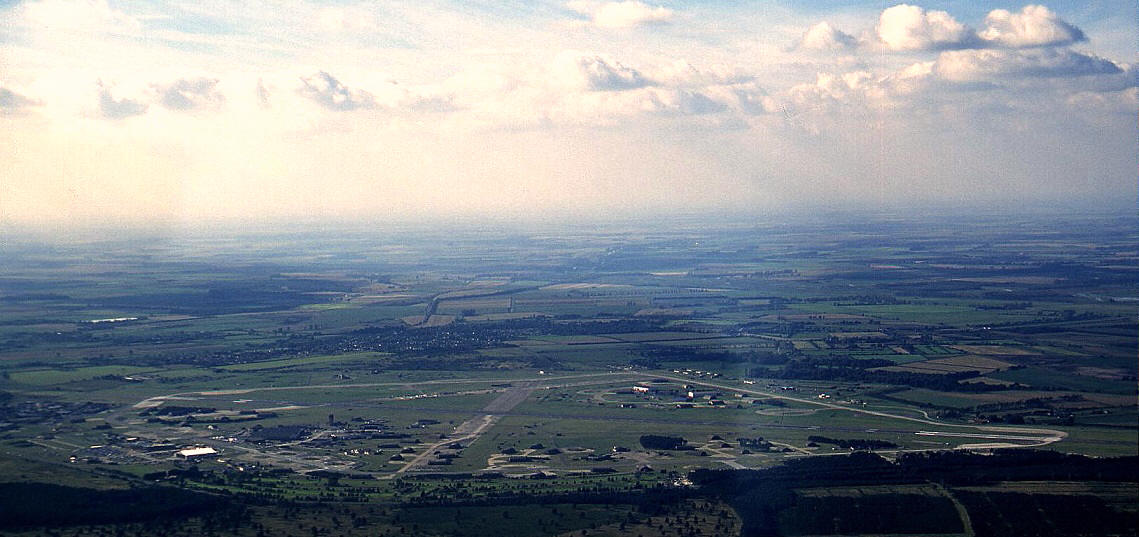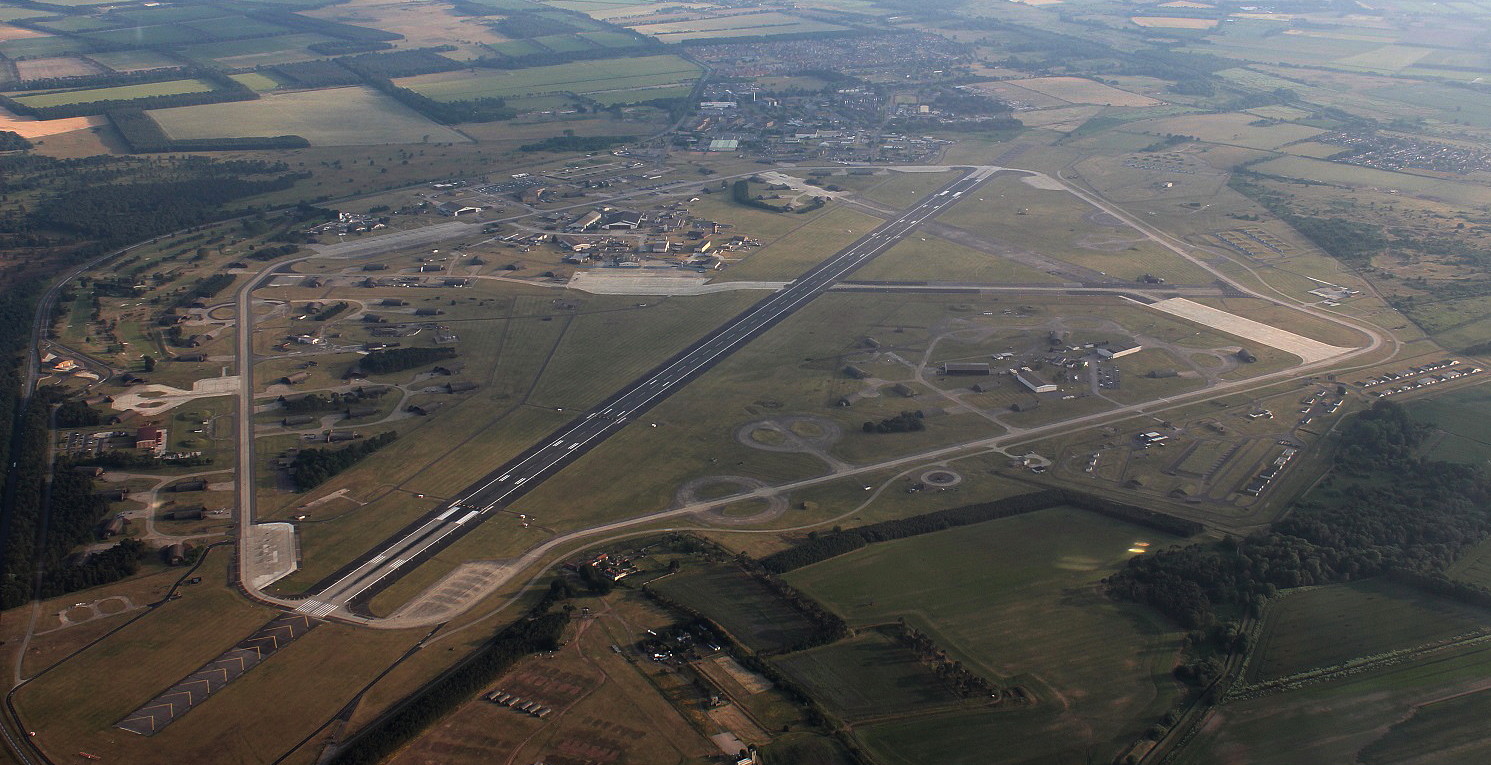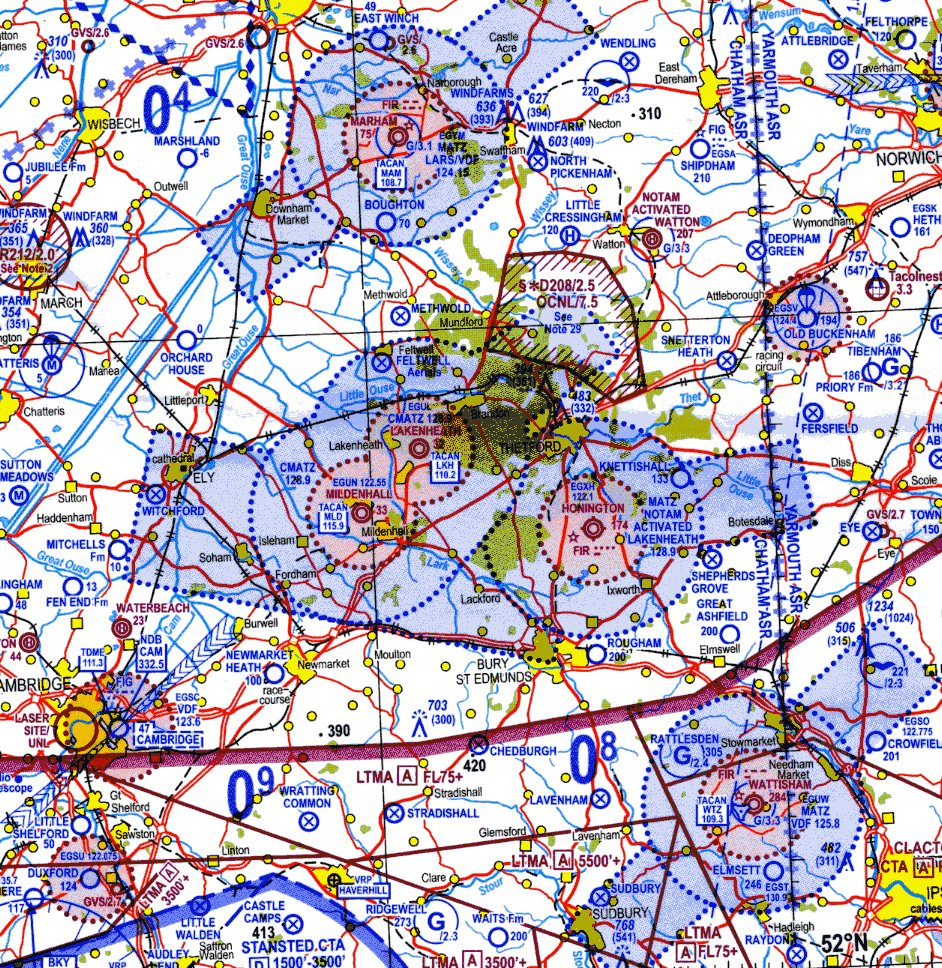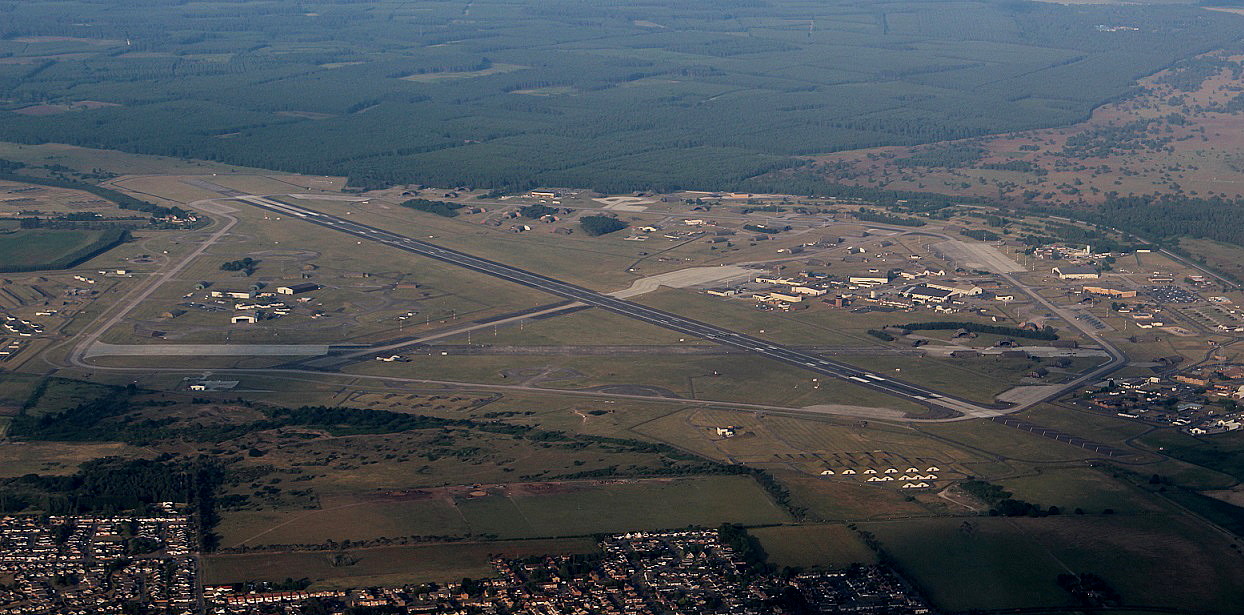Lakenheath
LAKENHEATH: Military aerodrome
Note: All pictures by the author unless specified. Apart from the first picture, the rest were taken in June 2015. The second picture is of the North American F-100D Super Sabre which acts as a permanent gate guardian inside the main entrance.
Military users: There is a report saying that in WW1 a little used airfield/landing strip was established here when the area was being used as a bombing and ground-attack range
WW2: 1941 to 1945; RAF Bomber Command 3 Group
149 Sqdn (Stirlings)
199 Sqdn (Wellingtons & Stirlings)
Note: The first image is from a CAA chart in the 2000s.
Post 1945: 1948 - USAF 3rd Air Division (B-29 Superfortress)
1962: USAF TFW (North American F-100 Super Sabres)*
1975: USAF TFW (F-100D & F types, soon to convert to McDonnell-Douglas F-4 Phantoms)
1980s: USAF 48th Tactical Fighter Wing 492, 493, 494 & 495 Sqdns (F-111F Aardvarks)
Location: SE of Lakenheath village, NW to N of the A1065, 4nm SSW of Brandon, about 4nm NNE of Mildenhall, and about 8nm W to WSW of Thetford town centre
Period of operation: 1941 to 1944. Then 1948 to -
Runways: WW2 – 1940: 17/35 1280 hard 05/23 1829 hard
12/30 1189 hard
(Presumably all standard 46 metre widths? Runway 17/35 was later extended by 92 metres)
The runways were under reconstruction in 1944/5 and planned to be: 18/36 1829x91 hard
06/24 2743x91 hard 14/32 1829x91 hard
(It seems they eventually opted for retaining standard 46m runway widths)
2000: 06/24 2743x46 hard
NOTES: The first trials with FIDO, (Fog Intensive Dispersal Operation), were held here in September 1943 and were successful to a large degree being installed at MANSTON and WOODBRIDGE and several other RAF Stations.
There were plans in 1945 were for this to be a ‘Very Heavy Bomber’ base with hardstandings for twelve such aircraft. Was this for the Convair B.36? It certainly seems a much larger and strengthened runways were planned for the B.36 due to arrive in the early 1950s but did forward planning extend this far? As things turned out, in 1948 LAKENHEATH, after four years of being rebuilt, became the first UK base offered to the USAF to accept the B.29 Superfortress. The first arrivals landing in July 1948. Different groups were deployed on 90 day stints of duty. (Where did they go after the 90 days?)
The B.29s were superseded by B.50s in August 1949, supported by KB-29 refuelling tankers. In January 1951 a small number of B-36s did arrive, (see remarks above), supported by C-124 Globemasters. The USA have always been incredibly keen on spying and in 1953 RB-36, RB.50 and the ultra-secret U-2 types arrived. In mid-1954 the B-47s and KC-97 tankers arrived. The B-47 was a high-performance type in it’s day. I remember seeing them taking off from BRIZE NORTON trailing black smoke when on a cycling tour of airfields from London to Gloucester, Bristol and Bournemouth via Youth Hostels with my friend Mike Parker when about fourteen years old in about 1961. Later in 1954 the B-47s moved out, the airfield becoming vacant, but when France withdrew from NAT0, in 1966 the USAF 48th Tactical Fighter Wing arrived with their F-100D Super Sabres*. In 1972 the Super Sabres were replaced with F-4 Phantoms which operated until 1977.
These in turn were replaced by the F-111, a troubled type initially suffering innumerable problems in service. Eventually most of the problems were solved and the final ‘F’ version was reputed to be a fine and formidable fighting aircraft. Probably like the Eurofighter today, seeking an enemy? By then, it was surely pretty obvious the ‘Cold War’ had reached a very expensive stalemate and no ‘actual’ threat remained? The four squadrons in the 48th TFW had some eighty F-111Fs, and all they did was perform endless worthless exercises, costing many millions of dollars. It has since come to light (alledgedly) that a large degree of operational incompetence almost beggaring belief would probably have rendered these squadrons nigh on ineffectual if “push had come to shove”. I wonder if that will ever be proven as correct?
*THE CUBAN MISSILE CRISIS
According to author Jim Wilson, in his book 'Britain on the Brink' the USAF had F-100 Super Sabres based here in 1962 at least, and these were capable of carrying a 1.1 megaton nuclear weapon. During this period, at least for part of October 1962, these were armed and poised to attack the Soviet Union. Two other F-100 bases during this period were BENTWATERS and WETHERSFIELD.
We'd love to hear from you, so please scroll down to leave a comment!
Leave a comment ...
Copyright (c) UK Airfield Guide






















